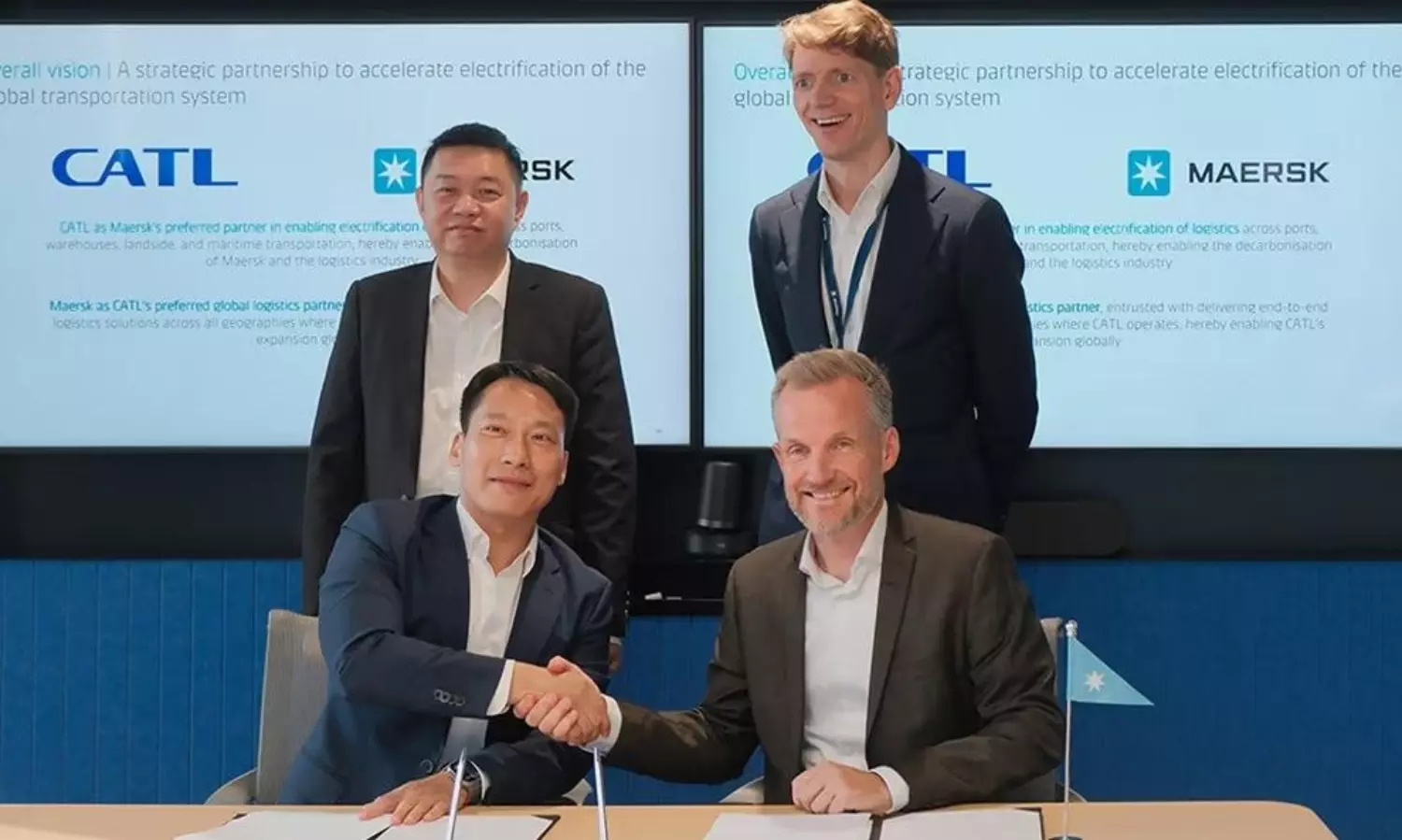Maersk and CATL partner to drive green logistics and supply chain electrification
Maersk and CATL partner to electrify supply chains, boost green logistics in Africa

Maersk and CATL have signed a strategic Memorandum of Understanding (MoU) to advance decarbonisation across global supply chains and strengthen CATL’s international logistics. The agreement makes Maersk CATL’s preferred global logistics partner, covering ocean freight, air freight, project logistics, and warehousing, while also exploring electrification across key parts of the supply chain.
The signing ceremony on 9 October in Hong Kong was attended by senior executives, including Morten Bo Christiansen, Senior Vice President of Maersk’s Energy Transition, and Akin Li, Executive President of Overseas Car Business at CATL. The event was witnessed by Robert Maersk Uggla, Chairman of Maersk, and Libin Tan, Chief Customer Officer of CATL.
The MoU builds on a five-year collaboration between the two companies. It focuses on providing tailored solutions for diverse markets, maintaining supply chain resilience, and co-developing scalable electrification initiatives. These include electrifying container shipping, ports, inland transport, and warehousing using CATL’s advanced battery technologies, as well as energy management and battery recycling solutions.
Maersk aims to reach net-zero greenhouse gas emissions across its business by 2040, while CATL plans to achieve carbon neutrality in core operations by 2025 and across its battery supply chain by 2035. Together, the companies aim to accelerate decarbonisation in logistics, leveraging Maersk’s global network and CATL’s energy technologies to set a new standard for sustainable supply chains.
“Combining CATL’s cutting-edge battery technologies with our logistics capabilities redefines what is possible in logistics,” said Morten Bo Christiansen. Libin Tan added that the partnership will deepen collaboration in shipping, digitalisation, and new energy applications to support a lower emissions future.
For Africa, the partnership signals access to more sustainable and resilient logistics solutions, which can support growing trade, reduce carbon impact, and strengthen the continent’s integration into global supply chains.


